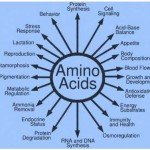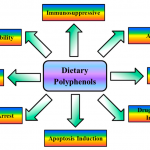Monthly Archives: March 2016
Could Lack of Carninutrients be Your Issue?
Carninutrients, what are those? Well, if you’re familiar with the term carnivore or meat eater then carninutrients is probably going to start to make some sense to you. We think about meat eaters as having different nutrients or exposure to different nutrients as compared to individuals who are going to be predominantly plant eaters or herbivores. Now most of us are not on either extreme of the category. We’re not carnivores and we’re not herbivores. We fall in the middle. We’re pretty much omnivores. However, when we look at our diet there are some very important nutrients that come from meat and we call these carninutrients.
Now one thing to understand about carninutrients, and this varies a bit when you look at the medical literature with some experts suggesting that carninutrients solely come from meat sources, or that with others expressing that carninutrients come predominantly from meat sources. The bottom line is that if you’re not consuming any carninutrients you’re probably not getting an adequate amount of certain nutrients that are specifically found in protein. Now what nutrients are we particularly talking about here? There are a couple we want to keep in mind and we can break them down into two different categories.We’ve got the nutrients that are amino acids and then we’ve got nutrients that are non-amino acids.
Amino Acid Sources of Carninutrients
Carnitine
The name definitely shows the correlation here, carninutrients, carnitine exaggerating the carni on that. When we talk about carnitine it is going to be found predominantly in red meat. It’s found in all proteins, but the more red meat we have the greater the amount of carnitine we’re likely to find in that, and carnitine is pretty important. Most people really like carnitine because carnitine is what helps us take our fat from our diet and put it into the energy burning components of the cell and actually burn that fat for energy. Now if you can be a more efficient fat burner then you’re likely to have less accumulation of body fat overall. So, carnitine is extremely important in that. That’s not the only role that carnitine has. It also is beneficial in the structural components, our lean muscle tissue, as well as having some positive effects on overall brain health as well. So, carnitine is pretty important.
Carnosine
Another one that falls in is a nutrient that has a similar name called carnosine. Now carnosine is actually what is considered an anti-glycation nutrient. Now what that means is that carnosine is going to have some antioxidant-type properties and it’s going to inhibit some of the negative effects that blood sugar has on various proteins throughout the body. It’s very protective so we can think about carnosine as having antioxidants and anti-inflammatory properties to it.
Creatine
The third one that falls into this amino acid category is going to be creatine. Now creatine, most people think about creatine as being associated with working out, muscle building, body building, these types of things and yes, while it does have very positive associations with that, one of the things that we should also consider here is that creatine is a very important part of our body’s muscle tissue. What we know now is that individuals who have better overall muscle composition tend to have better aging characteristics as well. If you want to age better you should probably start trying to find ways to develop better muscle tissue, and creatine is very important in this process. The nutrients or the three additional amino acids that help build creatine are going to be pretty favorably found from protein sources. If you want to have good muscle tissue development, good anti-aging, good longevity characteristics make sure you’re getting creatine into your diet through adequate protein consumption.
Taurine
Taurine is definitely one that is less talked about. One of the things that we in this society have a tendency to do is become more overactive. We tend to be more in a stress model and taurine is important because it calms the brain down. It brings down the overactivity in the brain. It’s very calming to the brain. It’s what we call an inhibitory neurochemical. In addition to that, when we start thinking about the activity of the platelets, if you think about the sticky part of our blood, if we cut ourselves what allows our blood to begin to clot those are the platelets that are doing that. Our platelets are very rich in taurine, and taurine is what helps drive and promote that clotting mechanism, or prevent that mechanism from over clotting I should say. For individuals that don’t adequately consume taurine they actually clot too easily. If we want to prevent some of that, taurine is great in inhibiting clotting because of the action that it has on calcium.
Non-Amino Acid Sources of Carninutrients
Iron
What is so unique about iron? The first thing is that iron is going to be necessary for building good red blood cells. If we want to carry oxygen around and prevent anemia and be energetic then you’ve got to have good iron around. However, we shouldn’t just pitch iron thinking about its relationship to blood and to prevention of anemia. The additional role that iron has, one of which I’ll mention here that is extremely important in this day and age is that it’s important for detoxification enzymes. We have these great little unique enzymes called cytochrome P450 enzymes, and while the name of that is not so important what is important is the fact that these enzymes help us detox. If we want to keep our inflammation down, keep our bodies healthy, prevent aging at a more rapid rate then we have to be able to efficiently detox.
The other area where iron is extremely important and much less talked about is the role that it has in good neurological health. Some of the different conversions that we need to make from different types of chemicals, different types of metabolites to get to the neurochemicals we actually want to be at requires iron as a co-factor in that process. Without iron you don’t make a metabolite, you don’t make the likely neurotransmitter either.
B12
The next nutrient is going to be B12. B12 is another very common nutrient. Most people think about B12 as being also associated with energy and that’s for just cause also because we don’t build good healthy red blood cells if we don’t adequately have B12. It’s a very important carninutrient as well. Yes, you can get it from other sources outside of meat, but it’s just not going to be very efficient. B12 is so important in regards to red blood cells because it’s going to help with a process known as methylation. Methylation has a number of different applications from helping produce healthy DNA, you’re helping to replicate your genes, helping to detoxify, and keeping an inflammatory protein named homocysteine nice and low and under control. Homocysteine has many damaging effects so we certainly want to keep that down and B12 is very important in doing that.
Selenium
Now selenium, a little small micronutrient here, mineral, and we don’t really hear a lot about selenium but selenium has some very important roles in the body. The first role is that selenium is going to be considered an antioxidant. One of the things that selenium is very important in doing is that it helps to re-synthesize some of our other antioxidants. If we’re looking at all the antioxidants and how they work together selenium is a critical co-factor in making sure these other antioxidants all have the horsepower that they need to keep inflammation nice and suppressed. Selenium is predominantly going to be found in skeletal muscle tissue and the reason being is that it binds up to other proteins. This is one of the carninutrients that you can find in non-animal sources, but again it’s predominantly found in animal sources.
Phosphorus
Another one is going to be phosphorus. Phosphorus is an important carninutrient simply because if you look at it by weight phosphorus is going to make up about 1% of our overall body weight. In addition to that, it’s the second most abundant mineral so you can see just from those two numbers it is fairly important. When we start talking about what the utilization of phosphorus is going to be, it’s going to be involved in your bones, your teeth, in your overall growth and repair processes so it’s pretty important for those mechanisms as well. One of the things to note about this is that while you can get a small amount of this from fruits and vegetables it’s not an appreciable amount to really make any significant difference. Therefore, it means that you’ve got to be able to get that phosphorus from your protein sources in the diet.
Now in concluding this conversation about carninutrients one of the things to keep in mind is that while plants are a very important part of our diet and in many cases you could probably argue that they should make up the majority of our diet because of the numerous health benefits. I want you to keep in mind that these carninutrients that we find in proteins are not likely to be found in any appreciable contribution in a vegetarian diet. If you are consuming a vegetarian diet there are some limitations and supplementation might be necessary.
Don’t forget these carninutrients, and if you’re looking at rationale for why should I bring protein into my diet, or how much protein should I be eating, keep in mind that without that adequate and consistent protein consumption you’re losing some very important nutrients that quite honestly apart from supplementation just really aren’t found anywhere else. This should stresses the importance of why these carninutrients should be a routine component in your diet.
Carbohydrate Source Matters . . . Are You Making the Right Choice?
Do you think carbohydrate source is important? It’s pretty common to hear from time to time from patients that if I get my carbohydrates from grains, or if I get my carbohydrates from fruit, or if I get my carbohydrates from say starchy vegetables it doesn’t really matter as long as I get an equivalent amount of carbohydrates. That’s not technically accurate, and what I want to share with you is the reason why.
I picked two examples, pasta and butternut squash, as the carbohydrate sources to compare. Pasta we know can be made from several things, but for this example I’m going to utilize wheat as the source of where it is coming from. The other carbohydrate source example is butternut squash. Let’s just for simplicity sake make the argument that this is 40 grams of pasta versus 40 grams of starchy vegetable and in this case butternut squash. I want to point out a couple of the differences here and why it’s not just about the amount of carbohydrates that you’re consuming. Butternut squash is going to have a much broader nutrient profile to it which means you’re going to get a broader array of vitamins and minerals that are going to be more consistent with supporting your overall health. Pasta or wheat can’t make that argument. You are going to be limited in what you are going to be getting from it. Yes, you will get some B vitamins, a few minerals, but you also get a couple of what are known as anti-nutrients in there as well that are not going to be found in butternut squash in this example.
Vegetable vs. Grain Carbohydrate Source
Fiber
Now to be fair if we make the argument for whole grain pasta or wheat in its lesser refined form does it have fiber? Yes, it does have fiber. However, the amount of fiber that it has per the amount of total carbohydrates is not that high. It’s actually fairly insignificant. If we look at the fiber source for butternut squash it actually makes up a pretty large contribution. If you’ve ever eaten butternut squash, for example you bake a butternut squash, when you cut it in half and look at it and start to pull it apart with a fork you can actually see the fibery components of that. It’s very dense in fiber and there are many benefits, one of which is that it supports good gastrointestinal health.
Potassium
Potassium is something that we routinely need to find in our diet, and choosing the right carbohydrate source will ensure some is included. It is something that helps keep our body alkaline and it’s not something that we’re going to find in the grain category, and again pasta in this example. But, potassium because of its alkalizing nature it’s one of the things that helps form optimal neurological function. We tend to lose potassium easily so we have to continually consume foods that are going to replete potassium. Even from the standpoint of something like blood pressure, potassium is extremely crucial in helping maintain the volume of water in our blood.
Non-GMO
Next let’s discuss Non-GMO. Butternut squash is not genetically modified. Now whether you’re a GMO fan or on the fence about it, the bottom line with genetically modified organisms right now is that we just don’t know. There are a lot of ifs, ands and buts about it that we just are not sure about. Many of these foods that are genetically modified, apart from the genetic modification issue and how that is going to interact with our own genome and how we’re consuming foods, that may not be ideal for us to consume because we have not consumed them throughout our history, the other issue that comes into this and that actually links us in to the next point here is toxicity risk.
Toxicity
When you look at genetically modified foods a lot of the reasons that these foods are modified have to do with the fact that they can have toxins applied to them. You don’t see that with butternut squash or with other starchy vegetables. You don’t want this inherent risk of potentially consuming your food that doesn’t match up to your own genetics, and also considering a food having a very high toxicity risk associated with that. Those risks do increase with your grains or with pasta or something of that nature.
Allergen
Again, you may or may not be in the camp of gluten is a problem. Basically what I’m going to leave you with on this is if you read the medical literature the medical literature is pretty emphatic that gluten is a problem, and it’s not just someone who has celiac disease. We’re also talking about individuals who have what is known as gluten sensitivity. Now again you’re looking at the consistent consumption of a protein that is part of the standard American diet. It’s routinely consumed and the more it is consumed in food the more problematic that food becomes. Butternut squash doesn’t really have risk because it doesn’t have that big allergen in protein in it so it does not have the allergen risk associated with it. There are also some issues that come into play with the irritation and inflammation that comes along with consuming pasta, wheat, gluten that that’s going to create an inflammatory response, and you just don’t get that inflammatory response and accompanying allergen risk from butternut squash or other starchy vegetables.
Rich in Color
That moves us into the next point which is these starchy vegetables are going to be very rich in color. Just think about this as an example, let’s say you have some pasta in one hand and a butternut squash in the other hand, pasta is very dull. It’s either going to be white or brown whereas a butternut squash is going to be very rich and vibrant in color. It’s going to be very orange. Think about the sweet potato having that deep orange color, or maybe even beets, another starchy vegetable, having a very deep red color. The red color that we think about, those are polyphenols, but we also think about those antioxidants. They keep inflammation under control.
Supports Probiotics
Another added benefit that we get from these is that the bacteria in our gut which we all like to talk about now with these probiotics, they like polyphenols. They like antioxidants. They love that color. That color supports their growth. If we’re trying to modify the bacterial environment in our gut consuming foods that are rich in color is very favorable to those organisms. It’s much more complicated than this, but in very simplistic terms if we’re trying to promote the growth of the beneficial organisms and inhibit the growth of some of the non-beneficial organisms that really comes back down to the color component. You completely miss that benefit from consuming pasta and wheat and grains and this whole category of carbohydrates. The same thing can be said going back to the fiber component because fiber additionally is going to enhance the growth of those bacteria as well. It’s going to give them a nice environment in your gastrointestinal tract that helps them flourish and do all the beneficial things that they can do for us.
Plant Estrogens
Now when we think about plant estrogens a lot of times plant estrogens are thought about as it relates to soy, for example. I’m not advocating soy here by any means, but what I am suggesting is that whether it’s butternut squash, beets, turnips, rutabaga, or okra, all of these different types of food with all of this color in them also have a wide variety of plant estrogens in them. The beneficial thing about this is that these are estrogen-like compounds that are not over stimulatory. They stimulate just enough to get the positive benefit from estrogen, but they don’t over stimulate.
So, does the carbohydrate source really matter? I think we can easily answer the question and say yes, it absolutely matters where you get your carbohydrates from. It’s not about 40 grams of carbohydrates versus 40 grams of carbohydrates. It’s much different than that. We have to stop thinking in such a narrow viewpoint of our food and look at what food has to offer beyond just simply calories. It’s not calories in and calories out. This is why two people that can consume 40 grams of pasta versus 40 grams of butternut squash will receive different end results. An individual that makes this a mainstay of their diet is going to be a much healthier individual.





